I took a stroll along the water's edge of the marina by the reed beds and photographed coots and grebes. Two children from a yacht behind and to our port side were tossing bread into the water, which was hungrily snatched by gulls and coots. Interfering gulls were soon chased off by the coots.
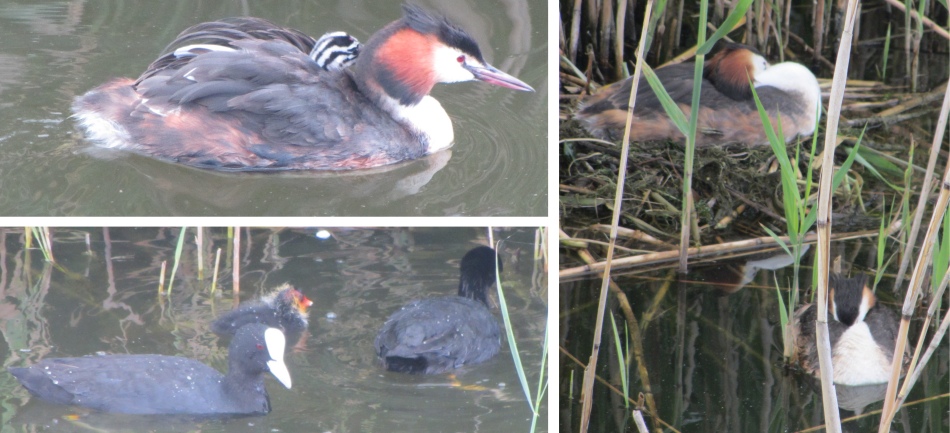 Coots and Grebes |
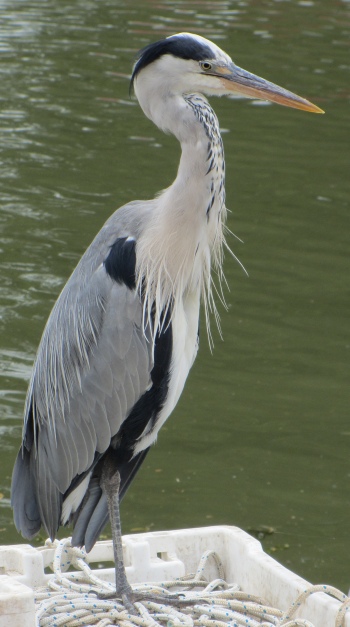 Heron in Oosterhaven |
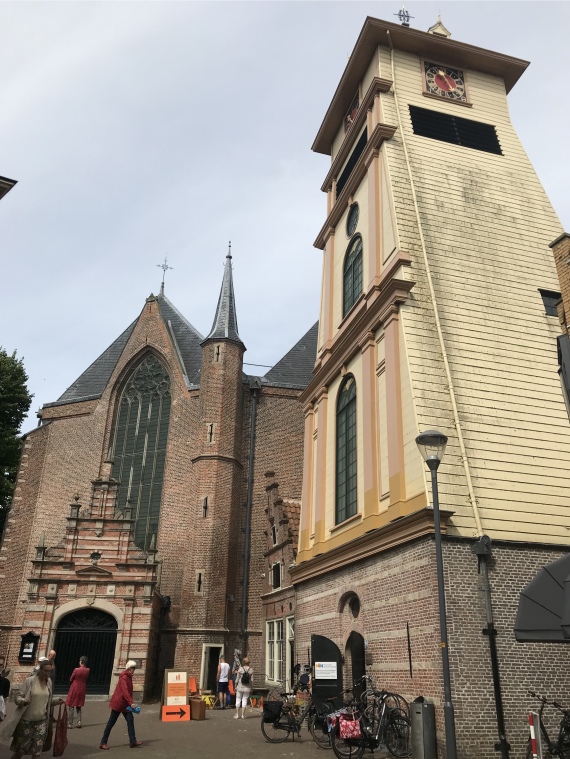 Westerkerk and Wooden Tower |
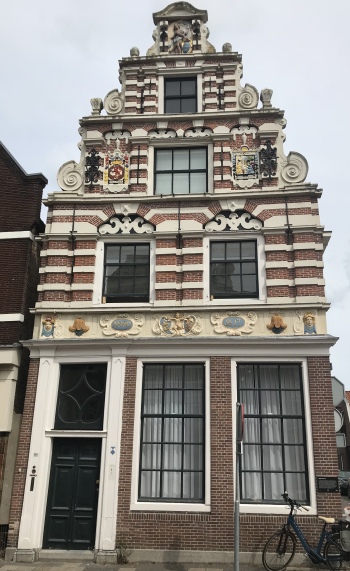 Pretty Frontage in Enkhuizen |
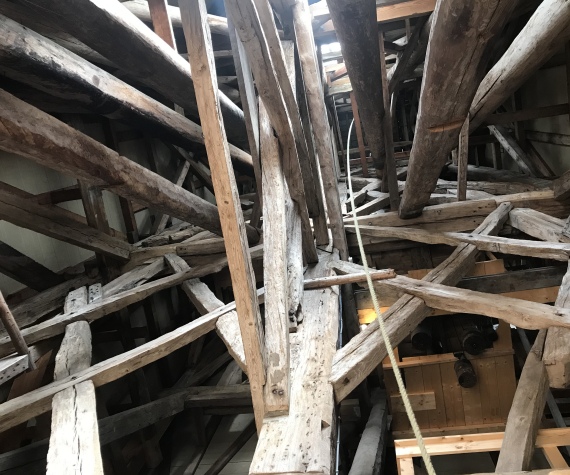 Inside Westerkerk Wooden Tower |
Cape Horn is the southernmost tip of the American continent, stretching far into the stormy sea area known as the Roaring Forties because of the thundering west winds. This cape was on the last route that was still viable for sailing ships carrying cargo, such as grain from Australia and nitrates from Chili to Europe. On these trips, rounding the Horn, was at one and the same time the blackest hour in the already difficult existence of the crew and the high point of their seamanship.
Sailors who have rounded the Horn feel united and in 1937 this led to the founding (in France) of the Amicale Internnational des Capitaines au Long Cours Cap Horniers. After the Second World War, when sail had disappeared, sections of the Amicale were set up in several countries. After a time membership was opened to every one of all ranks who had sailed on cargo ships round the Horn. The society of Dutch Cape Horn Sailors (De Vereeniging van Nederlandse Kaap-Hoornvaarders) was set up in 1959. At the invitation of the municipality, Hoorn was chosen as the registered office as it was from here that the discoverers of the Horn, Le Maire and Schouten, originated.
The Society flourished, with a membership of almost 100 still living Cape Horn sailors, and it had its own magazine in which member's experiences were published. The last reunion was held in 1979 and in 1985 the dying society became a foundation which aimed at keeping the memories of the great days of sail, particularly around Cape Horn, alive.
The Dutch Cape Horners Foundation now has almost 500 contributors or "participants", most of whom are interested in the history of seamanship in the wider sense. None have actually sailed around the Horn on cargo carrying sailing ships. The last member who actually did so, Captain Pieter G. van der Hoek, died on the 13th June 2008 at the age of 92. On the other hand, the number of members who have sailed round the Horn in charter ships and yachts during the last three decades is growing. Hoorn awards to the skippers of these ships a special trophy, whilst the Foundation awards the crews with a medallion.
We stood on the street, looking through the windows. Three old men, who were curating today, were hunched around a table. Rex thought it would not be a good idea to revisit this excellent museum; we'd be there for the rest of the day, and he'd probably buy another expensive book.
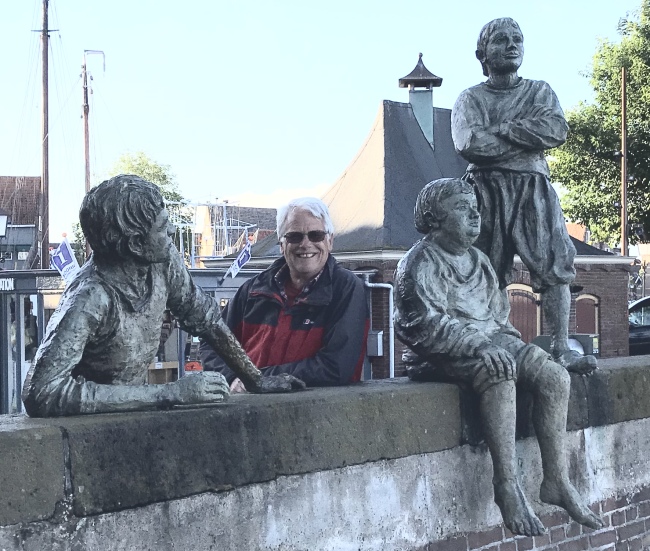 "De Scheepsjongens van Bontekoe" (Bontekoe's Cabin Boys) |
Hajo, Padde and Rolf are now more famous than the master of their ship, thanks to one of the greatest storytellers and most prolific writers in Dutch literature, Johan Fabricius, who was inspired by Bontekoe's log to write "De Scheepsjongens van Bontekoe" (Bontekoe's Cabin Boys) in 1924. This superlative, thrilling sea adventure is one of the classics of Dutch children's literature.
It is, above all, their true-to-life nature and their different characters that have ensured the threesome a place in the Dutch collective memory: Hajo is romantic and dreams of adventures in far-off lands. Padde, clumsy, fat and the butt of people's jokes, is 'Hajo's shadow' and reluctantly follows his friend to sea. And Rolf, Bontekoe's nephew and an orphan, is contemplative and calm, and often rescues the others from predicaments.
And they certainly get into plenty of predicaments. Vividly and with a great sense of pace, Fabricius describes how the crew of the Nieuw-Hoorn is hit by storms, impenetrable fog, Spaniards, becalmed seas and scurvy, the "dreaded enemy". The high point is a true event: an explosion that occurs when, through Padde's fault, a candle flame spreads via a brandy barrel to the gunpowder store. The ship is blasted into a hundred thousand pieces, amidst "hissing and cracking" it disappears into the sea.
When the cabin boys are washed ashore on Sumatra, they lose Bontekoe and begin a perilous journey through the interior of Sumatra (the mysterious atmosphere of which is captured perfectly by Fabricius, a native of Indonesia) to Bantam, Java. There, they are reunited with the survivors and with Bontekoe. They arrive back in Hoorn on New Year's Eve 1620, in the spot where they are still standing on the quayside today, thanks to Fabricius' exceptional talent for storytelling.
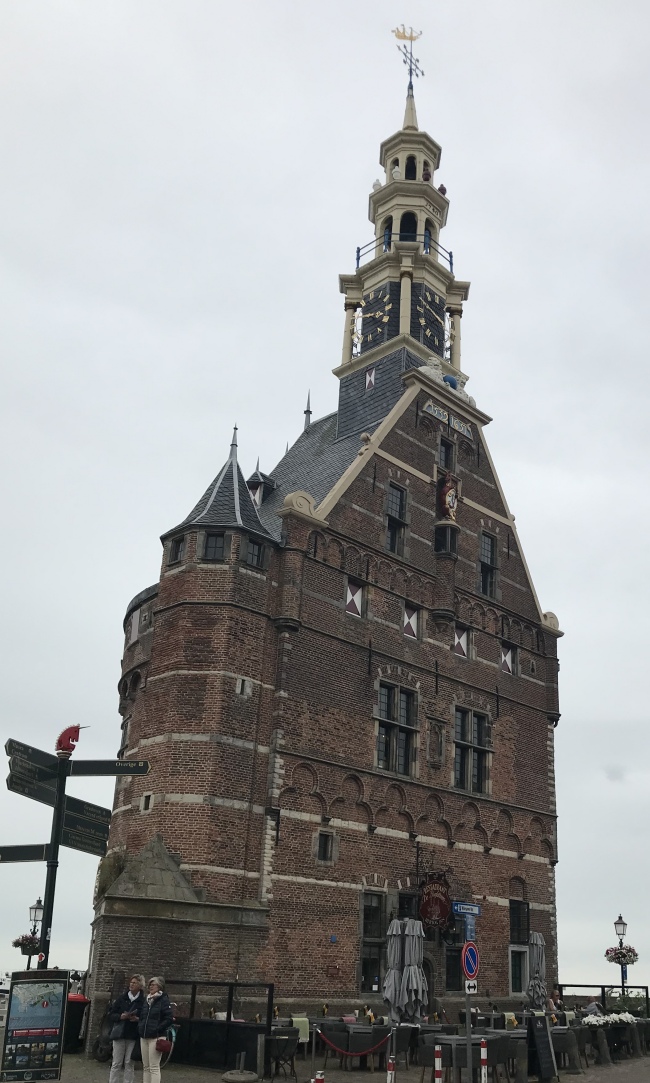 Hoofdtoren |
We continued on down the side of the Buitenhaven. Here a couple of large floating hotel cruise boats were berthed. One was testing its engines, producing large clouds of sooty smoke, and then tested its bow thruster.
We walked back up to towards the Hoofdtoren, and our attention was grabbed by a three masted tall ship that was gliding towards the wharf. A young fellow put a spring on at the bow, then a bow line, and then adjusted the two so that the captain could manoeuvre the stern to a large pile standing upright in the water, to which the captain eventually attached a stern line. This was very interesting to watch, and the total opposite of what we do on Duonita; we always get the stern line on first.
The sky looked grim, so we headed back to the station just as rain started to fall. We discovered that we were sitting in the Silence carriage, a strain for Rex since he babbles away incessantly. We managed to get back to Duonita just as the rain turned into a downpour.
We cooked on board, and then retired to the marina bar which was only 5m away from the boat. After our little drink, we left the bar and watched a pusher-tug push two fully loaded barges down towards the lock. We pondered for a while as to whether two barges strapped side-to-side would fit into the commercial lock. Checking AIS, the indication was the individual barges were pushed through one after the other.
On returning back to the boat, the skipper of the boat behind us on our port side asked us how he could get the pontoon hosepipe to work. We pointed out he had to turn the tap on and also press a button on the side; the water is pumped. He spoke to us in broken English, but I could tell he was not Western European. It transpired he and his family were Russian.
The family lived in Moscow, and had driven for four days, camping overnight on the way. They kept their German registered yacht in Medemblik, and had sailed around Holland several times.
I asked him, "Would you like to live in Holland?" "We really like it here, but we prefer to live in Russia," he replied. "Why?" "Because I have a job in Russia. It is very hard for me to get a job outside of Russia," he answered.
"What is your profession?" I enquired. "I am a gas burner engineer," he replied. " I decided to push him further, "Gas burners will be phased out in Europe over the next few decades as we shift over to more renewable energy sources. Perhaps less gas engineers will be required." He agreed with a large grin, as he did whenever he said anything.
I joked with him about the blockade in Harlingen that halted our progress a few days earlier, and explained what the protest had been about. I was a bit naughty and shifted the conversation onto discussing the protesters in Russia over the war in Ukraine. "What happens to the protesters?" I asked. "The police take them away and they spend a day in prison. The police also write remarks on the individual citizen papers," he stated. Hmmm .... their cards are marked for the rest of their lives I thought. At times he spoke good English, at times he said he could not understand, and at times he said he didn't want to talk about certain topics, always with a grin. Rex hinted that I should desist from discussing politics with the chap.
We shifted the conversation to the trip he and his family were undertaking. His plan was to sail down to Amsterdam the following day, then on to Ijmuiden, and finally down to Den Haag. "But there are gales forecast for tomorrow," we both blurted out. He seemed unaware of that. Then I mentioned that he would have to pull into Scheveningen, the port next to Den Haag. He was unaware of this, so we got our charts out and showed him. I explained he could get a tram from there to Den Haag city centre; indeed it is close enough to walk.
We pointed out that he would have to choose the best time to sail from Ijmuiden to Scheveningen in order to make best use of the tides. He didn't appear to have any tidal information at all, so we advised him to ask the harbourmaster in Ijmuiden for advice on the best time to set sail for Scheveningen. We wondered, was he really so naive, or was he pretending to be?
It was late, cold and about to rain again, so we extracted ourselves from the conversation and bade him goodnight.
Rex was convinced he was a spy.
